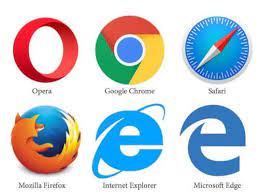Web Browser
A web browser takes you anywhere on the internet. It retrieves information from other parts of the web and displays it on your desktop or mobile device. The information is transferred using the Hypertext Transfer Protocol, which defines how text, images and video are transmitted on the web. This information needs to be shared and displayed in a consistent format so that people using any browser, anywhere in the world can see the information.
When the web browser fetches data from an internet connected server, it uses a piece of software called a rendering engine to translate that data into text and images. This data is written in Hypertext Markup Language (HTML) and web browsers read this code to create what we see, hear and experience on the internet.
In addition, most browsers also support external plug-ins required to display active content, such as in-page video, audio and game content.
What does a Web Browser do?
Essentially, a web browser handles HTTP activity between a client and a server that is the backbone of World Wide Web use. URLs are traffic directions for the web browser, and the browser uses IP addresses and other tools to establish these connections.
Along with facilitating web surfing, new types of web browsers have additional functionality through a range of plug-ins that can add features after the fact. Some of these have to do with security and accessibility, while others have to do with end user conveniences or data aggregation.
